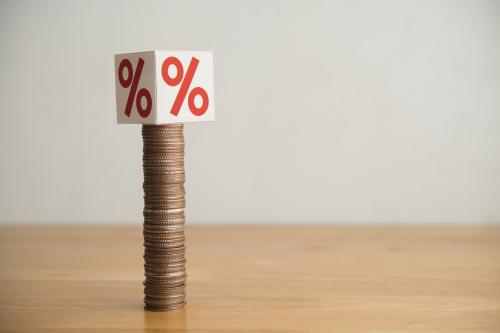Parallel markets for foreign exchange are back in the news. On December 17, 2015, Argentina’s peso plunged after the new government floated the currency. The official exchange rate went from 9.8 pesos per dollar to 13.95, close to the parallel rate of 14.5. It then closed the trading day at 13.4. Earlier, on December 15, South Sudan’s central bank switched to a float from its fixed exchange rate. Its pound dropped like a stone from 2.95 per dollar to the parallel market rate of 18.50 per dollar. The country is an oil exporter and embroiled in conflict.
In contrast, Nigeria has been in the news mainly for reintroducing foreign exchange (FX) rationing following the precipitous decline in oil prices. Oil accounts for 70-80 percent of the country’s fiscal revenues and the lion’s share of its exports. As a result, the naira price of the dollar is some 40 percent higher in the parallel market than the official exchange rate (280 versus 200 naira per dollar).
These experiences hark back to the mid-1980s, when parallel markets for FX were rampant in Latin America and sub-Saharan Africa. While everyone recognized high parallel FX market premia as a costly distortion, how to unify official and parallel rates remained a hotly debated topic.
For example, in September 1986, the parallel FX rate in Nigeria was 5 naira per dollar, 230 percent higher than the official exchange rate of 1.5. The central bank was contemplating a float to unify exchange rates. An immediate question arose: what equilibrium rate would emerge from the float, and would there be an inflationary burst? A common argument at the time in the International Monetary Fund and the World Bank was that the equilibrium rate must be close to 1.5 because most of Nigeria’s oil dollars (the bulk of FX earnings) were allocated at the official rate. Therefore, the float would not lead to inflation. But survey evidence showed that domestic traded goods prices were apt to reflect an exchange rate closer to 5 than 1.5. This fact, in conjunction with analytical models, had three important implications.
First, the equilibrium exchange rate was the parallel FX rate. The official rate was completely infra-marginal and, in particular, irrelevant for traded goods prices and inflation dynamics.
Second, given the first result, the parallel market premium on FX was an implicit tax on the tradables sector. For Ghana, the premium was an implicit tax on cocoa farmers who were effectively forced to surrender their export proceeds at the official rate, with the fiscal accounts benefiting. In Nigeria, the government was on net selling oil dollars to those lucky enough to receive import licenses at the official rate. So the premium was a massive subsidy and instantaneous source of profit to import license recipients. Nevertheless, the premium was a ruinous tax on the once-flourishing Nigerian agricultural sector, decimating non-oil exports. Agriculture, which had been hurt because of Dutch Disease during the short-lived oil boom, was not given a chance to recover during the oil bust that followed because of the implicit FX tax via the parallel market premium.
Third, since the official rate was infra-marginal, unifying rates via a float would lead to a large depreciation in the official exchange rate as it merged with the parallel, equilibrium rate. But, in spite of the large depreciation of the official rate, there would be no burst of inflation because traded goods prices already reflected the parallel rate. Inflationary impacts, if any, would come from the fiscal consequences of the float. Ghana would be losing implicit tax revenues, so unless there was a compensating reduction in government expenditure, reliance on the inflation tax, and hence, inflation itself, would go up. For Nigeria, the opposite would prevail, as an implicit subsidy would be eliminated, lowering the fiscal deficit. As it turns out, Nigeria’s September 1986 float led to an exchange rate close to 5 naira per dollar (the then-parallel rate), but inflation in the 12 months that followed was lower than in the preceding 12 months.
The preceding results come from the exchange rate unification experiences of the mid 1980s and the related macroeconomic consequences as set out in two papers, one published in the World Bank Economic Review (Pinto 1989) and one in the Journal of International Economics (Pinto 1991). The models therein built on a model by Rudi Dornbusch and his coauthors on the black market for dollars in Brazil and Saul Lizondo’s models on dual exchange rate unification at the IMF.
Back to 2015. A December 17 Bloomberg story following Argentina’s float cautioned: “Morgan Stanley estimates that quick devaluation of the peso may lead inflation to accelerate to 35 percent in 2016.” It is easy to see where this number comes from: if one is interested in potential inflation impacts, one would look at the local currency price of the dollar, and this rose by around 35 percent in Argentina. However, the results above suggest that the inflation effects will come, not from the depreciation of the official exchange rate, but from the fiscal consequences of unification (loss of implicit taxes from the erstwhile parallel market FX premium) and how the Argentine government addresses these. And against this must be set the improvement in the investment climate and the better outlook with the elimination of the implicit tax of 32 percent ((parallel rate-official rate)/parallel rate) on tradable exports. This should solidify credibility and growth prospects, with eventually positive macroeconomic consequences.
The effects in South Sudan will be even more dramatic considering the rise in the price of the dollar by more than 500 percent (from 2.95 to 18.5) implying the elimination of a crippling 84 percent tax on agriculture and manufacturing. This will provide a big boost to the fiscal accounts and the non-oil tradables sector, assuming conflict can be brought under control.
This leaves Nigeria, which seems reluctant to learn from its own past mistakes. Not only is the government bleeding fiscal revenue by selling its scarce oil dollars cheap, the harm that was inflicted on agriculture and manufacturing in the 1980s following the then-collapse in oil prices is being repeated. This policy benefits the few at the expense of the many, as in the 1980s. It is of vital importance that this be remedied by returning to a market-determined exchange rate, especially as the medium-term outlook for oil prices remains bleak.
Brian Pinto is an Associate Instructor at the Eccles School of Business, University of Utah, and an adviser to the African Development Fund Policy Innovation Lab. Earlier, he was at the World Bank from 1984-2013 followed by two years as chief economist, Emerging Markets, at GLG in London. His second book,
How Does My Country Grow? Economic Advice Through Story-Telling
, was published by Oxford University Press in 2014. The views expressed here are entirely those of the author.
The Brookings Institution is committed to quality, independence, and impact.
We are supported by a diverse array of funders. In line with our values and policies, each Brookings publication represents the sole views of its author(s).




Commentary
Parallel FX markets 101: What to expect from the currency floats in Argentina and South Sudan
January 11, 2016